On September 7, 1965, a debate on Romanino (Girolamo Romani; Brescia, 1484/1487 - 1566) was held in Brescia, on the occasion of the major monographic exhibition that the city dedicated to the painter. The exhibition represented the first important opportunity for in-depth study of the artist, and some illustrious names in the culture of the time participated in the intense debate: Ernesto Balducci, Gian Alberto Dell’Acqua, Renato Guttuso, Guido Piovene, Franco Russoli, who were joined by Pier Paolo Pasolini. We offer below an extensive excerpt of Pasolini’s speech on Romanino, first published in 1976, a year after the death of the great writer, director and critic who marked Italian culture in the 20th century.
Don’t ask me what I’m doing here. Here I am among some insiders like Guttuso or Russoli and some competent scholars like Piovene and Father Balducci not to mention DellAcqua. I of art criticism really have ancient velleities, but no real expertise and so I feel exactly a bit like one of you who recently visited this Romanino exhibition, which I knew very poorly, I knew so because of some reproductions, because of an ancient reading of Longhi of mine done twenty years ago and so I was deeply amazed, surprised, in short for me it was a novelty and it is a bit of this astonishment of mine, of this surprise of mine in front of Romanino that I would like to speak to you, a painter that I thought was a little master, one of those who are called petit maître, a concluded fact, perfect, typically provincial and instead it is absolutely not so.
[...] I went in to see the Romanino exhibition and was asking my companion: but where is the Romanino, what is it? Every two or three paintings my idea of Romanino was forced to change. At the end of my tour in the exhibition and then today in Val Camonica at the end of my investigations I still had to know where and what Romanino was. According to a preconceived and mistaken idea that we have of what an artist should be (for example, seeing Lotto you know very well what Lotto is, even if he has moments that are not completely Lottoesque and so Titian and so on) of Romanino, of a true Romanino that satisfies all of us, on which we all agree, an image, a plastic and even maybe a little bit lyrical idea of Romanino we don’t have. This is the crime on which I conducted my investigation, and I followed some leads that from the first moment I realized were wrong. The first track is to consider Romanino an eclectic painter: he is not an eclectic painter at all, he is not an eclectic painter, he is not within the painting; said so outwardly, the thing might even make one suspect a certain eclecticism in him, but the inside of a painting, the stylistic examination of the inside of a painting, shows us that we are not at all faced with an eclectic painter, the qualities of eclecticism are lacking in him. Leclecticism is never dramatic, it is never deeply contradictory, and instead Romanino is continually dramatic and continually suffers from contradiction and is continually aware of the abandonments and resumptions of different stylistic motifs. Moreover leclecticism always takes place within a precise cultural sphere and is a limitation of what Barthes calls the various writings of a cultural context, whereas Romanino’s leclecticism is infinitely more complex, that is, it does not take place within a cultural sphere, but goes either before or after this cultural sphere i.e. it is either retarded or it is anticipatory, as both Piovene and Guttuso said earlier, that is, its eclecticism takes place in time up to archaic Gothic moments, in the future up to even foreseeing and foreshadowing Caravaggio.
Another wrong track: that he was a great professional. He was not even a great professional, because even of a great professional he lacks the qualities within the painting. That is, he is never merely skilled, and this is shown to us by the fact that along with moments of extraordinary skill as a craftsman, he evidently had this skill (I remember, for example, a silver mantle of the Virgin done with such anonymous perfection of one who is only extraordinarily skilled in making mantles with all their folds, their reflections, etc.) and next to these moments of extraordinary skill as a craftsman, he was obviously a great professional.) and close to these moments of absolute complete skill there are those moments, let’s say, of clumsiness, which a skilled person would never have missed: when a skilled person paints fast, perhaps Guttuso will be able to confirm this or not, he always draws with elegance and with skill, he is never clumsy, on the other hand Romanino when he paints fast even borders on a certain ugliness, which he then incorporates into his style as an expressionistic element, but this does not take away from the fact that it is clumsy and unpleasant, almost ugly to look at. I think many conformist viewers when confronted with certain hands of those hags who are the prophetesses are shocked and find them ugly: they are horribly painted hands, a craftsman would never have made such hands. Nor is he, third wrong track, an easy painter, for none of his paintings inspire elegance, grace, pleasantness to behold, whereas of many lesser painters, the so-called petits maîtres, one feels like picking up a painting and taking it home and keeping it before one’s eyes as a pleasing element of one’s furniture. This idea never comes in front of Romanino, in front of him one is always in an attitude of the utmost, almost religious attention and always in a critical state, never one of delight.
Since I do not admire moments of great skill and am not even of the assertors of Romanino’s greatness in the Venetian phase, where indeed one might think of a certain absolute grace, I have never had this impression that I have before petits maîtres. The background within the painting, Romanino’s background is always distressed, it seems to have a quality of great severity, but not in the perhaps even formalistic sense, as we often find in Italian painting: often the Italian painter is formally severe, that is, he is classicistic; Romanino never is, there is always a deep distress within his paintings. These are the final results of my investigations, but like any self-respecting investigation I would like to bring you some evidence. The first evidence I would bring you is the stylistic consciousness that Romanino had in his own stylistic experiments. An eclectic does not have this consciousness and neither is he an easy painter, a journeyman painter. Romanino did, because he would leave, abandon stylistic experiences, and then take them up again as they were a few years later. I return to the example of the paintings of Asola. He painted, I no longer remember in what year, the Cantorie di Asola and he resumed this same kind of painting ten years later. During these ten years he had the most varied experiences, in his stormy quest as a severe and anguished artist. When ten years later he resumed the stylistic experience of Asola he resumed it to perfection, he continued at the exact point where he had ended that experience with absolute consciousness of his own stylism, so much so that he remade those ugly hands I mentioned in the beginning.
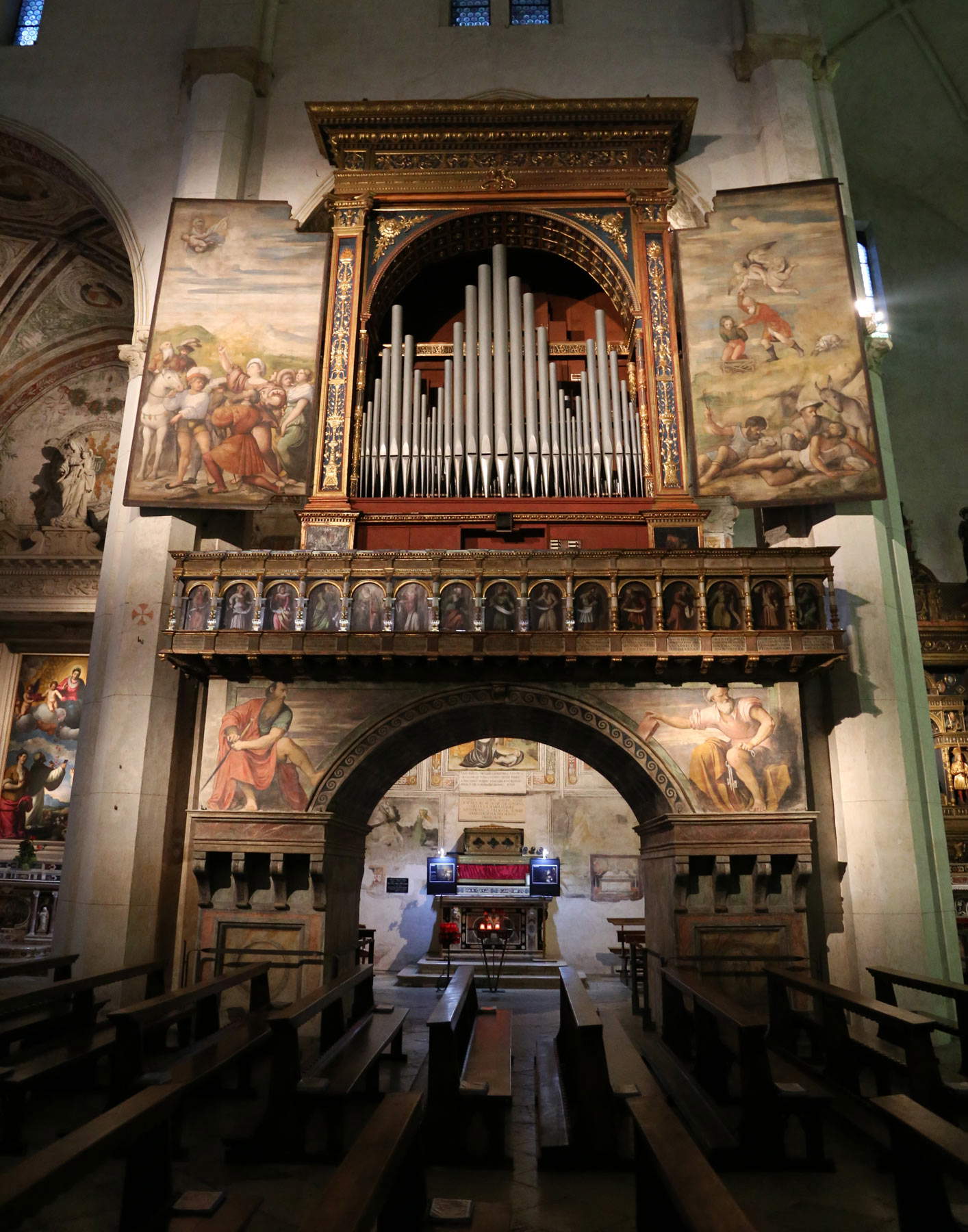 |
| The organ of Asola Cathedral decorated by Romanino |
 |
| Romanino, Sibyls, organ of Asola Cathedral (1524-1536; oil on panel; Asola, Cathedral). Ph. Credit Francesco Bini |
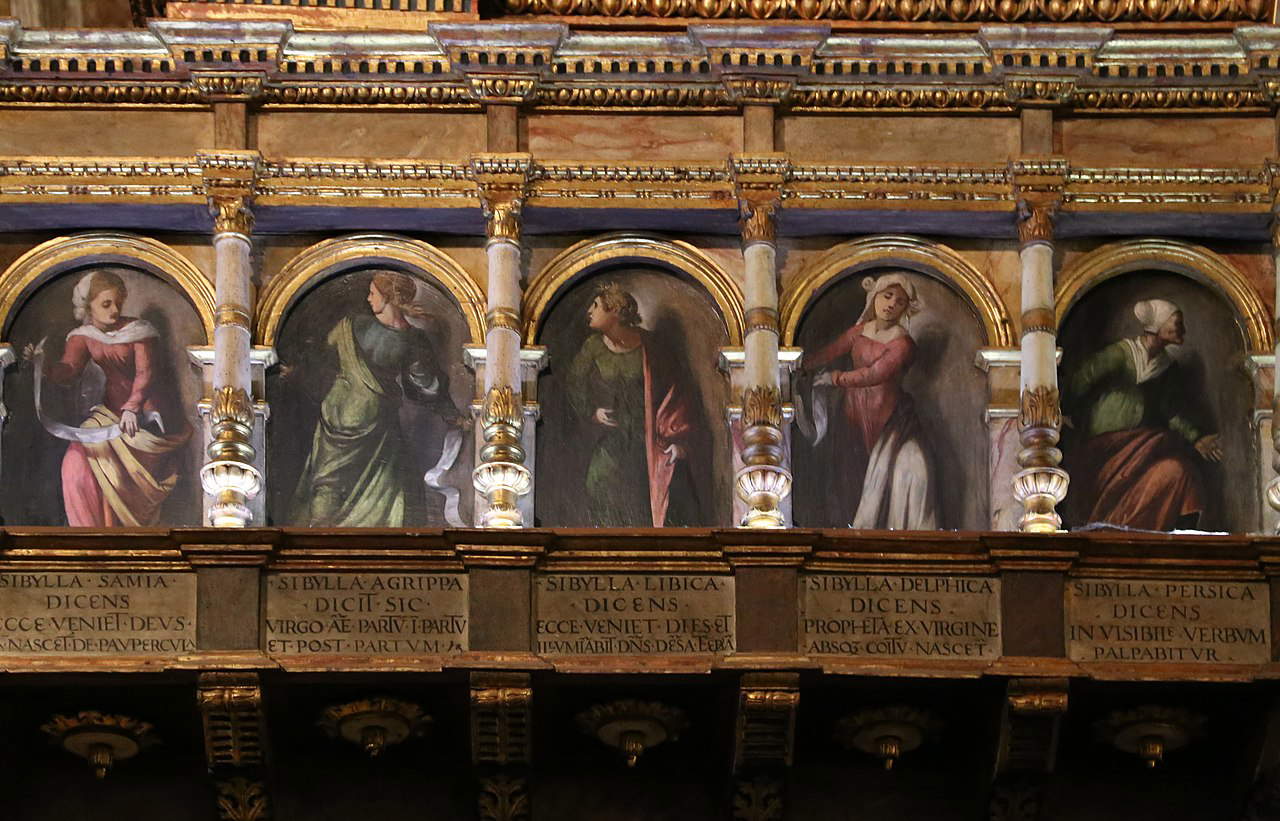 |
| Romanino, Sibyls, organ of Asola Cathedral (1524-1536; oil on panel; Asola, Duomo). Ph. Credit Francesco Bini |
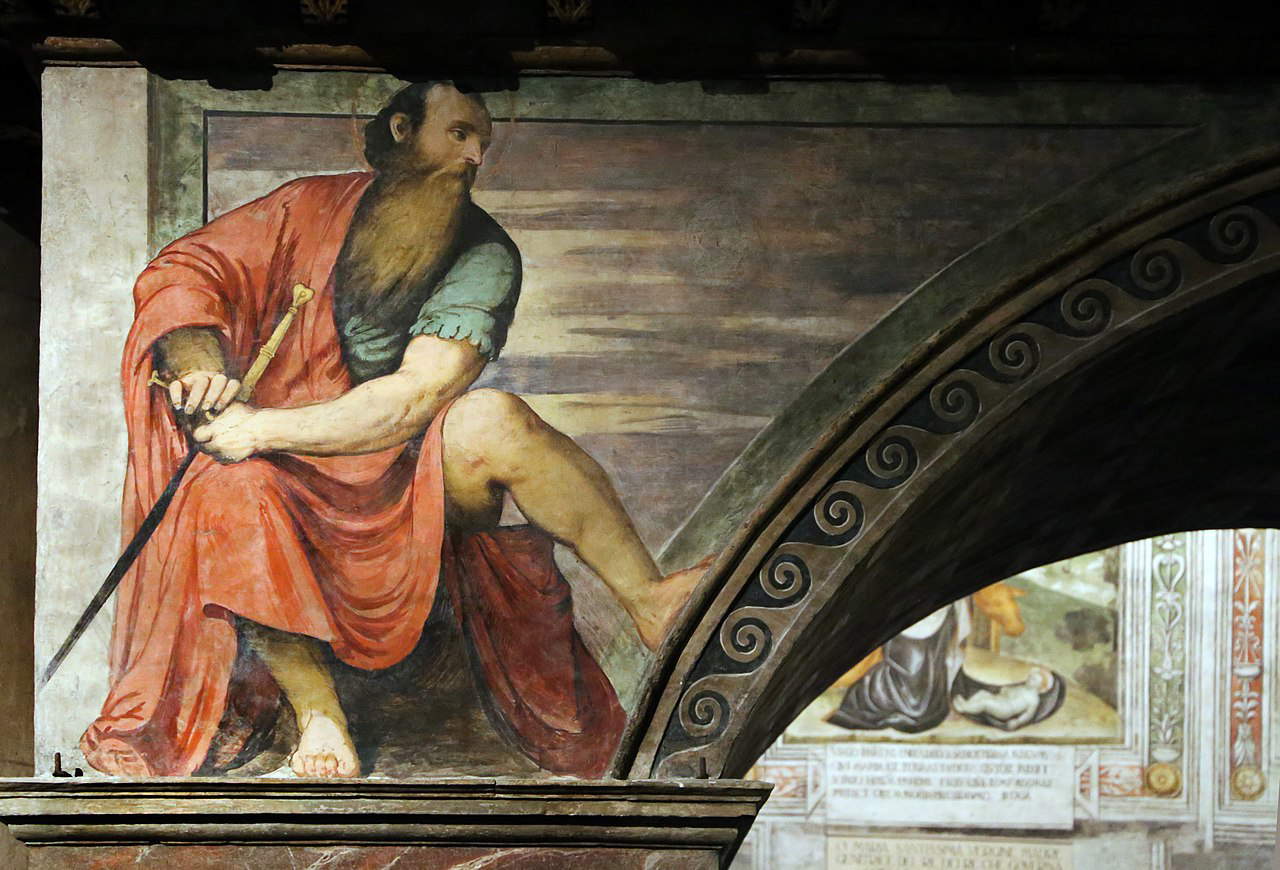 |
| Romanino, Saint Paul, organ of Asola Cathedral (1524-1536; oil on panel; Asola, Duomo). Ph. Credit Francesco Bini |
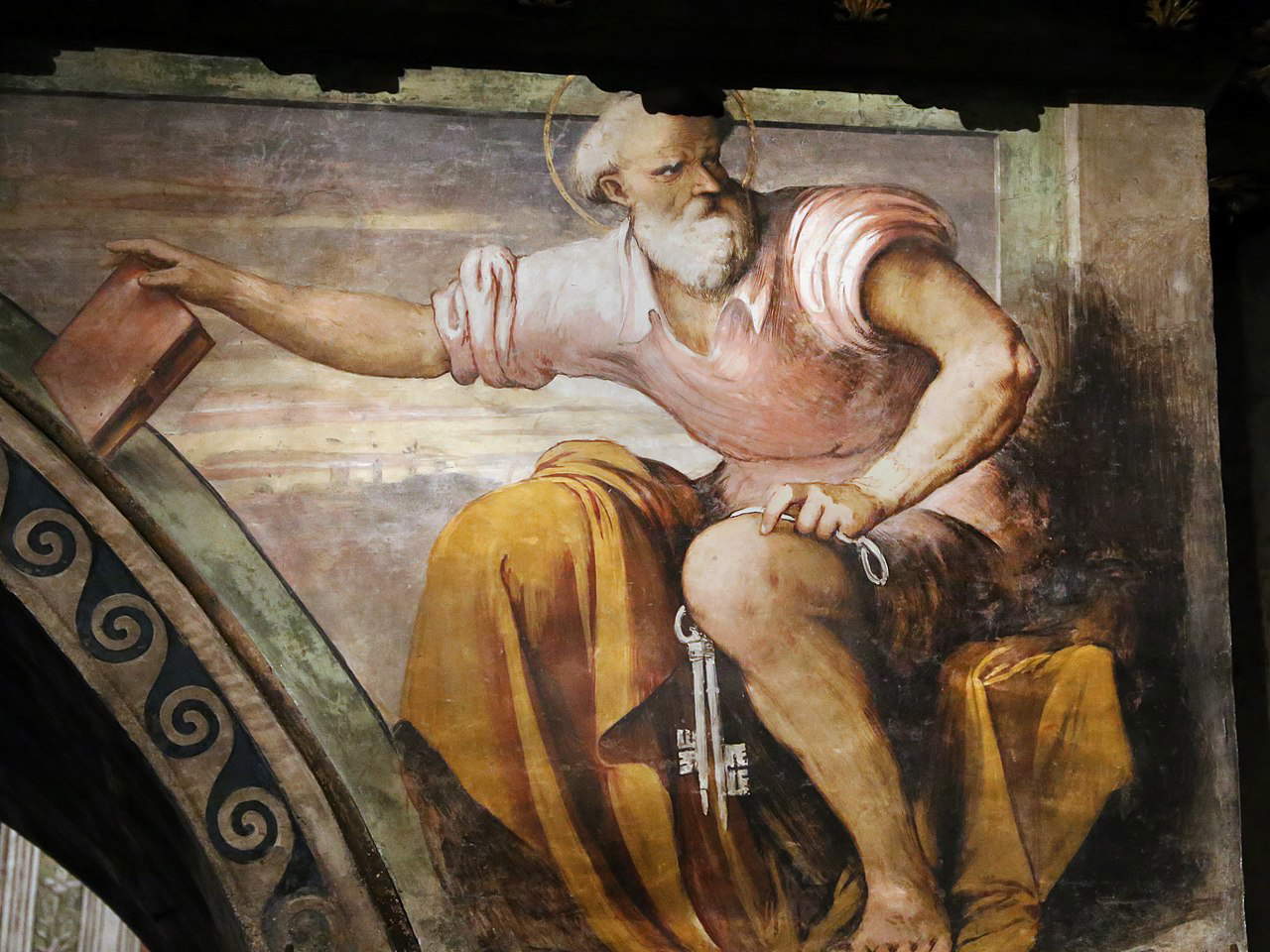 |
| Romanino, Saint Peter, organ of Asola Cathedral (1524-1536; oil on panel; Asola, Duomo). Ph. Credit Francesco Bini |
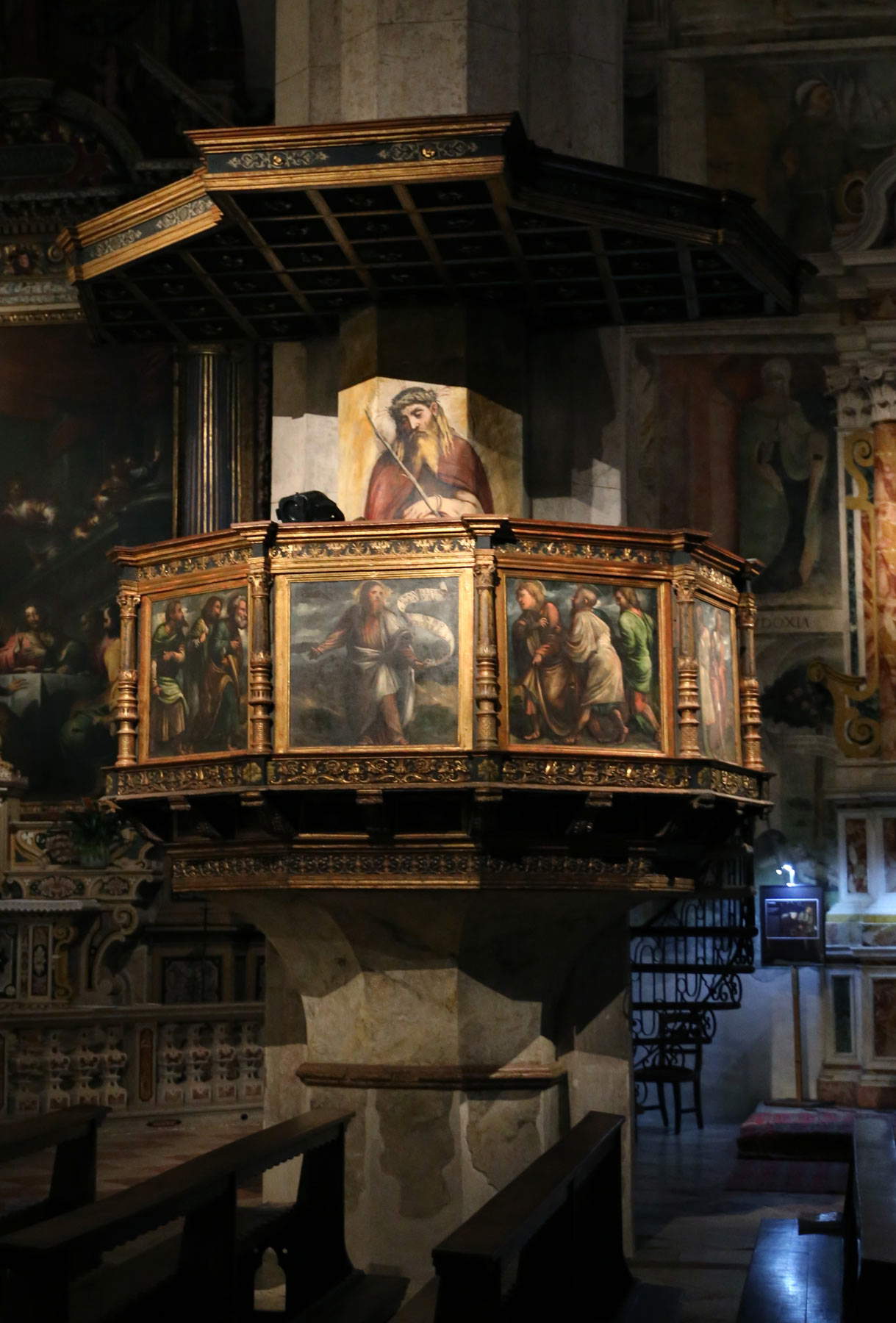 |
| Romanino’s panels for the pulpit of Asola Cathedral. Ph. Credit Francesco Bini |
 |
| Romanino, Apostles, pulpit panel for Asola Cathedral (1524-1536; oil on panel, 75 x 75 cm; Asola, Cathedral). Ph. Credit Francesco Bini |
 |
| Romanino, Apostles, pulpit panel of Asola Cathedral (1524-1536; oil on panel, 75 x 75 cm; Asola, Duomo). Ph. Credit Francesco Bini |
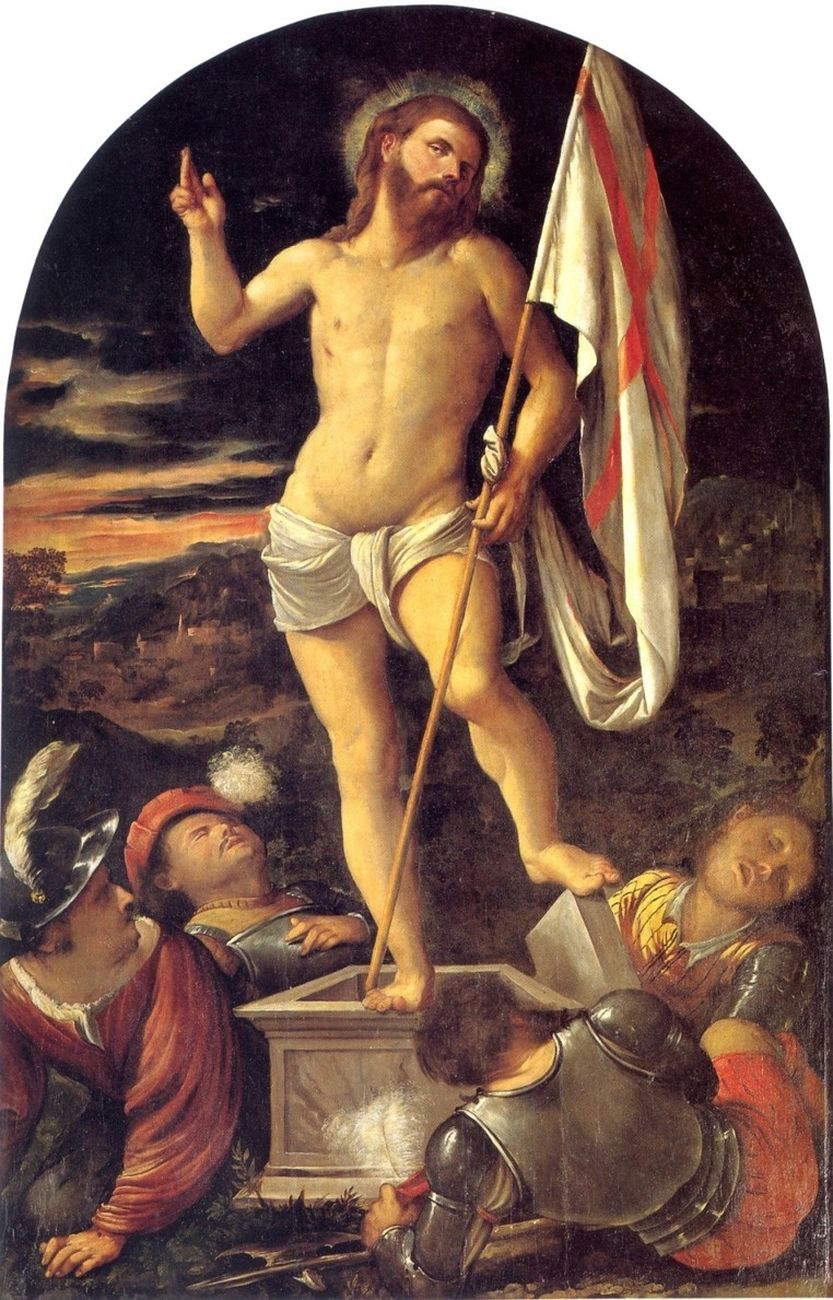 |
| Romanino, Resurrection (c. 1526; oil on panel, 236.4 x 125.6 cm; Capriolo, San Giorgio) |
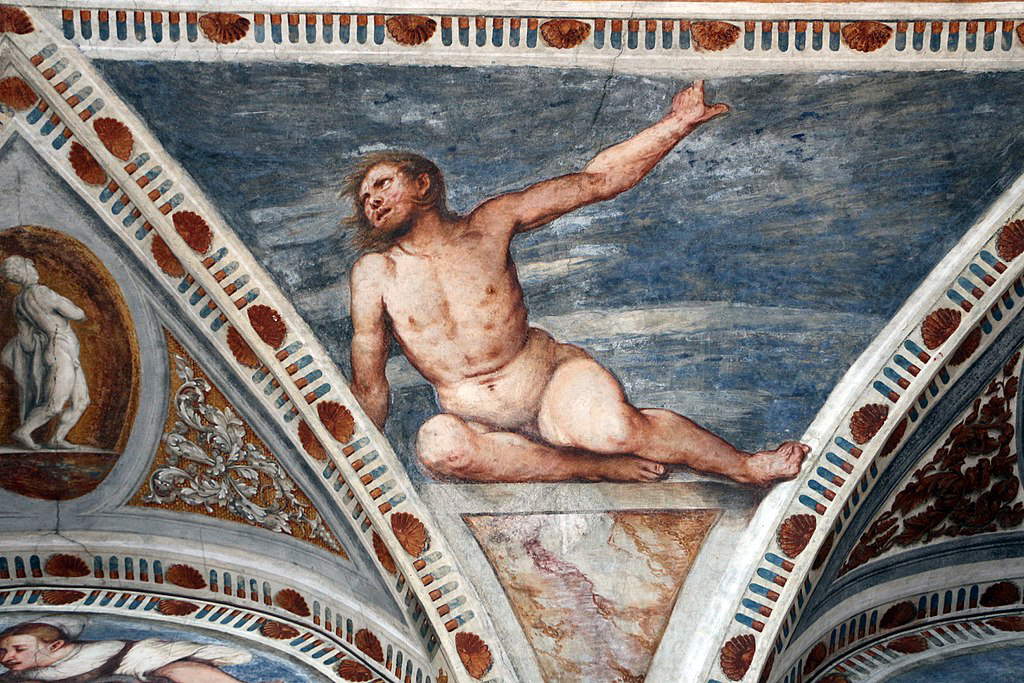 |
| Romanino, Frescoes of the Great Loggia of the Magno Palazzo (1531-1532; frescoes; Trento, Castello del Buonconsiglio). Ph. Credit D. Lira |
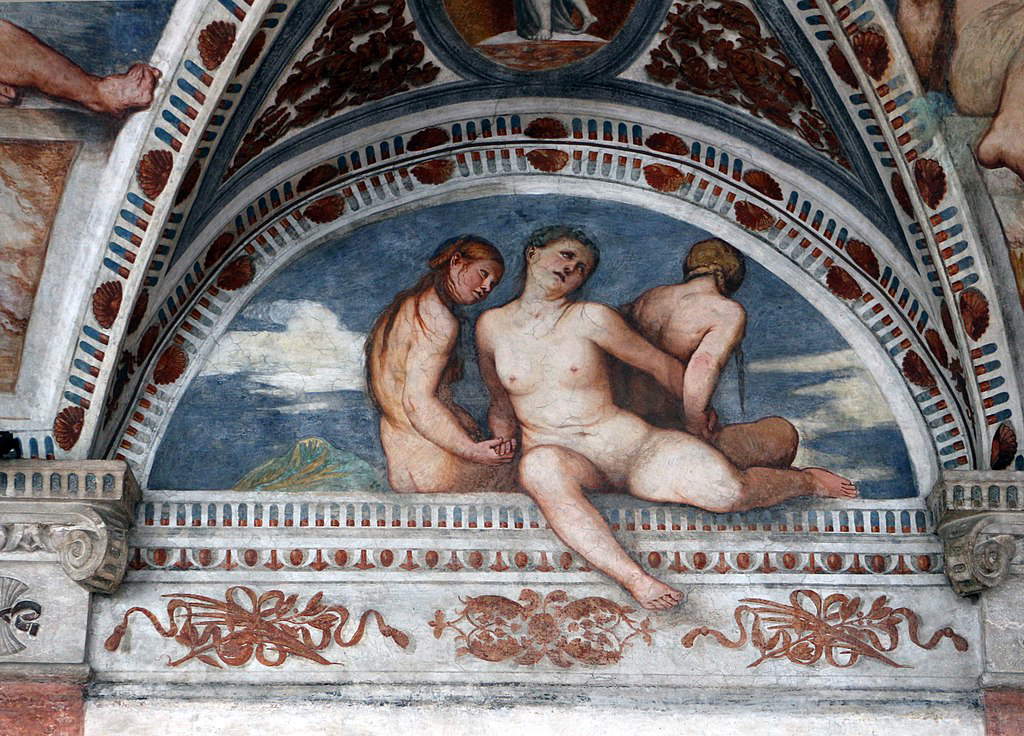 |
| Romanino, Frescoes of the Loggia Grande del Magno Palazzo (1531-1532; frescoes; Trento, Castello del Buonconsiglio). Ph. Credit D. Lira |
 |
| Romanino, Last Supper (c. 1540; oil on canvas, 293 x 190 cm; Montichiari, Cathedral of Santa Maria Assunta) |
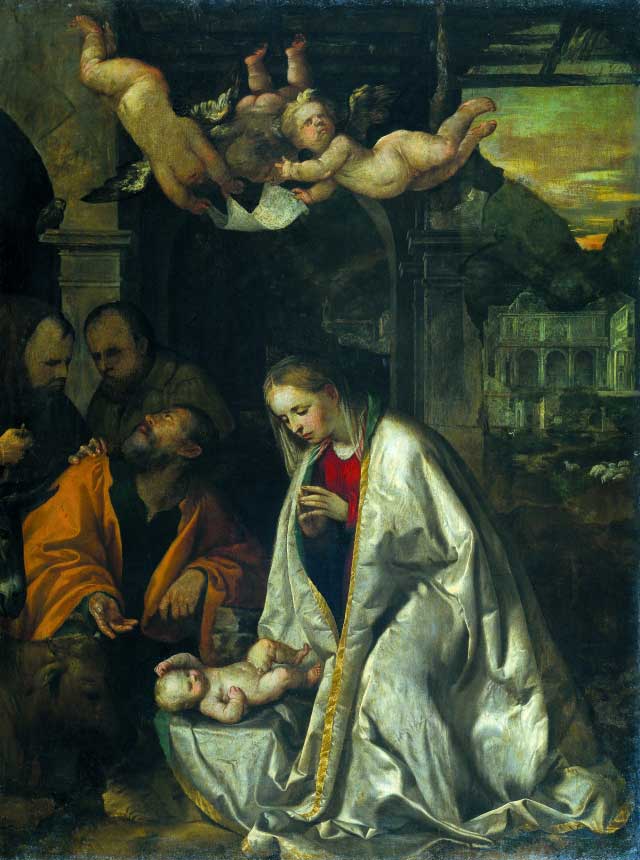 |
| Romanino, Nativity (c. 1545; oil on canvas, 241 x 180 cm; Brescia, Pinacoteca Tosio Martinengo) |
Another case that demonstrates, shall we say, the extreme sensitivity of this painter, a sensitivity that probably had something pathological and morbid about it: his anguish. What I called his anguish is given by a very characteristic fact, which I would like you to consider as the focus of this report of mine. I am referring to an ugly painting of his: it is a daltare altarpiece, The Blessed Virgin and Child with Saints of San Felice del Benaco that was painted about 40-41-42 (maybe someone will correct me if I get the dates wrong). Now this period was marked in that of Brescia by a time of religious repression, of moralistic and ideological repression. In what does the ugliness of this Romanino painting consist? It consists in having prefigured, which he often did (his painting is always full, as is clear from the speeches made by those who have preceded me, of prefigurations of even the very distant future), this painting of his prefigures the ugly seventeenth century, the seventeenth century let us say non-Caravaggesque, the unctuous, devout seventeenth century of insincere altarpieces, that is, the typically Counter-Reformation seventeenth century. It means that it took only a few years of lack of freedom, of ideological religious repression for Our Lord to undergo a very deep trauma and even to fall into those atrocious defects that certain painters of the seventeenth century will have during the Counter-Reformation.
So his is not a light, elegant, eclectic experimentation of various languages, but a real and proria series of experimentations of languages and schools or, as they say in recent times, an obsessive experimentalism, which makes him pass between the most varied experiences and never according to unevolution, let us understand, because in that case it would be precisely unevolution. When Piovene said that the Venetian period was the splendid one but that it did not satisfy him any more, I do not think he meant that the linfluence of the Venetians suddenly ceased in Romanino, passing from Titian splendor to an even unmade and almost decadent Giorgionesque experience, as Longhi says. Linfluenza veneta continued to tempt him, to tip him back, to reappear in his even future work. Now, however, still holding that Romanino’s career is a series of violent anguished leaps of a stylistic experience, from the adoption of one language to another, to a structural examination of his painting (very difficult) precisely because its mimetic, anguished quality was so strong, it turns out that there are some constant structural elements in his work. Now if I were talking about literature I would be a little more precise: talking about painting whose terminology I am not familiar with, excuse me if I am a little bit general. These two structural constants of Romanino’s painting that overcome the various and different contradictory stylistic experiences are two constants already mentioned by those who have preceded me, that is, a continuous reference to Gothic, but not to Gothic understood only as archaic, that is, as a return to the Quattrocento or even the Trecento, but to Gothic, let us say, as a Nordic, even Danubian mental or stylistic category. The other structural constant we find in all Romanino’s paintings is the gallery of psychophysical portraits of characters. In the Venetian moment, in the Giorgionesque moment, in the Ferrarese moment, the physiognomy and socio-psychological characterization of the characters remains constant.
These are the two constant structures of Romanino’s entire oeuvre, which, not being formal, and being rather content and cultural, may escape a purely visual or formalistic first glance. In fact, it is not a question of two formal structures, but of two cultural moments, and this is the point I would like to insist on, even if I am not able to provide very convincing evidence, that is, the reference to Gothic is yes formal, and it will probably derive from the reason that has always been said, that is, from the knowledge that was had in Italy during the first decades of the sixteenth century of the famous German prints, but this is but a symptom, it is but the appearance of a deeper cultural experience; that is, those models that came down from the Rhine through the Alpine valleys, of which Longhi speaks, were probably not only formal or stylistic, but also included a different ideology, a different way of seeing life i.e. a different culture. Thus this continuous structure of Romanino’s entire oeuvre implies a Nordic-German rather than Italian type of culture. And so his sympathy for certain psycho-physically and sociologically popular characters is also probably not the result of a mood of our painter, not a formalistic and casual fact, an immediate sympathy, but a cultural fact as well, that is, from his eyes it was as if the blindfold had fallen off which removed a possibility of immediate and sympathetic realistic vision, by the painters, of the poor world, which is then, not the ragamuffins of Ceruti, of whom Piovene spoke, but they are precisely that people close to the bourgeoisie which is the working class.
When Piovene said that the prophetesses of the Cantoria di Asola reminded him of certain realistic witches, I remembered that, seeing that same Cantoria, I had thought that those women painted there were the spinners of the spinning mill where, within a few decades, Renzo Tramaglino would go to work. So: a vision of stylistic experimentalism, the most varied, disparate and dramatic, but at the same time the two structural constants that we have said now. The fact that there are these structural constants implying two cultural ways of seeing reality makes his stylistic experimentation present itself precisely not as eclectic or as simply labored, but as pretextual. His different search for pictorial languages was pretextual as if to give a way to express himself despite the impossibility of expressing himself, so to speak; that is, if we look at all his stylistic experiences we will see how fundamentally missing from these stylistic experiences are the two languages, the two most typical writings of the epoch: missing from his stylistic search is classicism, I say classicism not to say classicism, as much as it would be more accurate if I said classicism, but I want to say classicism not to make a value judgment, and missing is mannerism. I don’t want to say that they are completely lacking, let’s be clear, because elements of classicism and elements of mannerism are there in his paintings, quite a lot, there is a head of the Virgin with a white bandage around it, of which a flap falls parallel to the nose, which reminds one of a similar thing by Pontormo, and things of this kind there are a lot: there are a lot of mannerist elements and there is a lot of classical setting especially in the firmer and more harmonious canvases. But there is never a complete cast within an entirely classical stylistic experience or within an entirely mannerist stylistic experience, there is never a Romanino painting in which the dominant is classical or the dominant is mannerist.
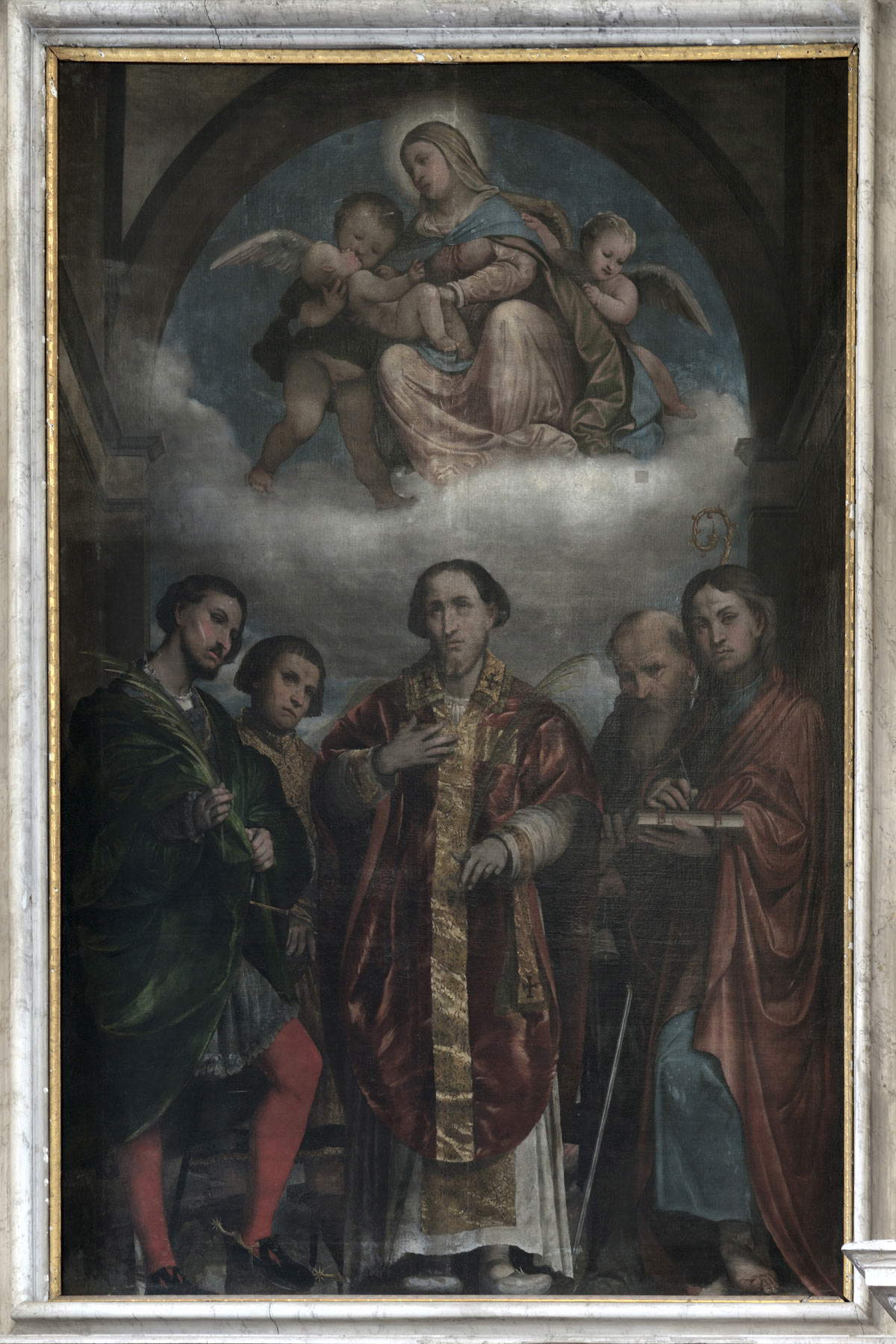 |
| Romanino, Virgin and Child with Saints (1536-1537; oil on canvas; San Felice sul Benaco, parish church) |
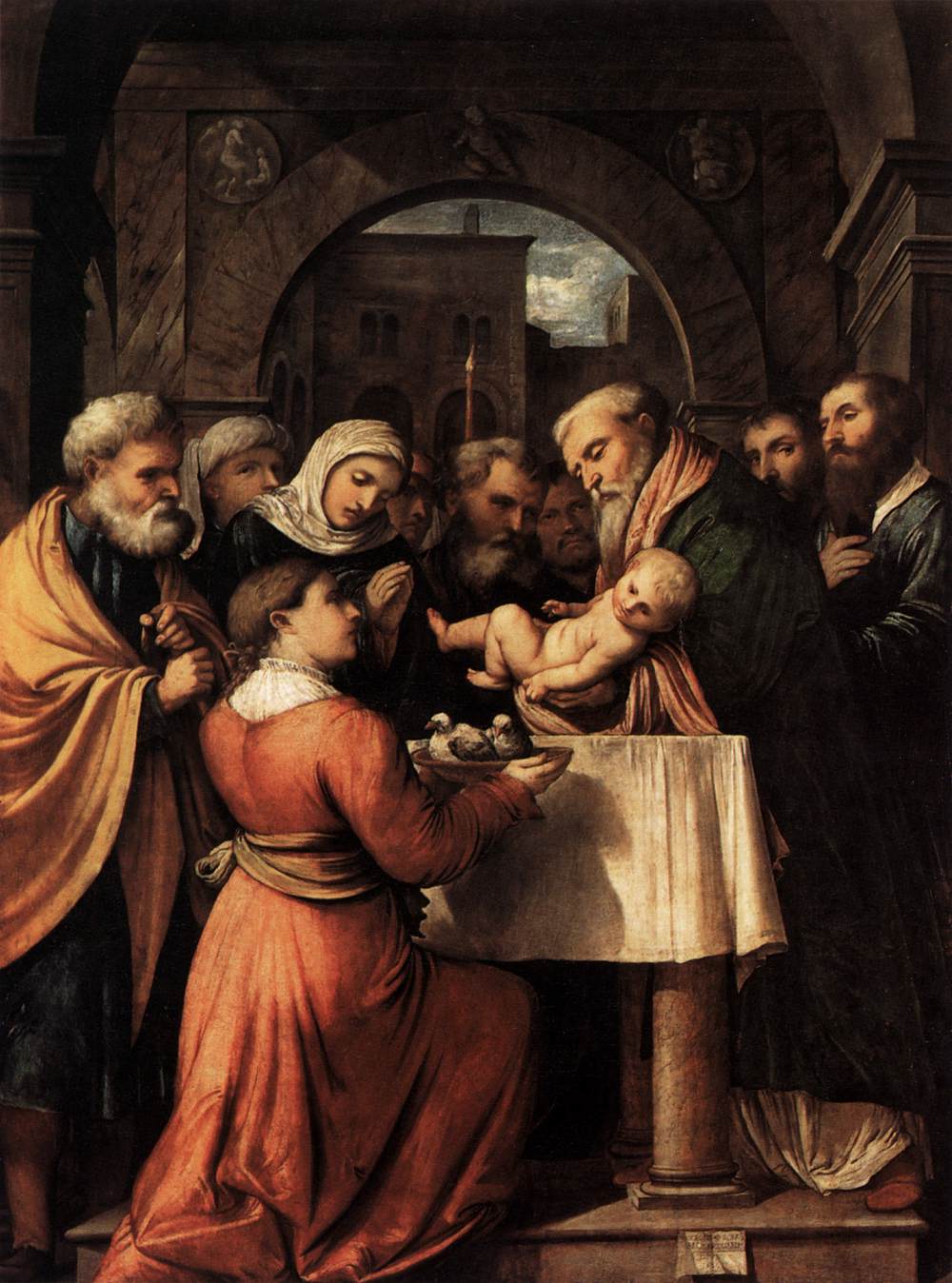 |
| Romanino, Presentation of Jesus in the Temple (1529; oil on panel, 188 x 144 cm; Milan, Pinacoteca di Brera) |
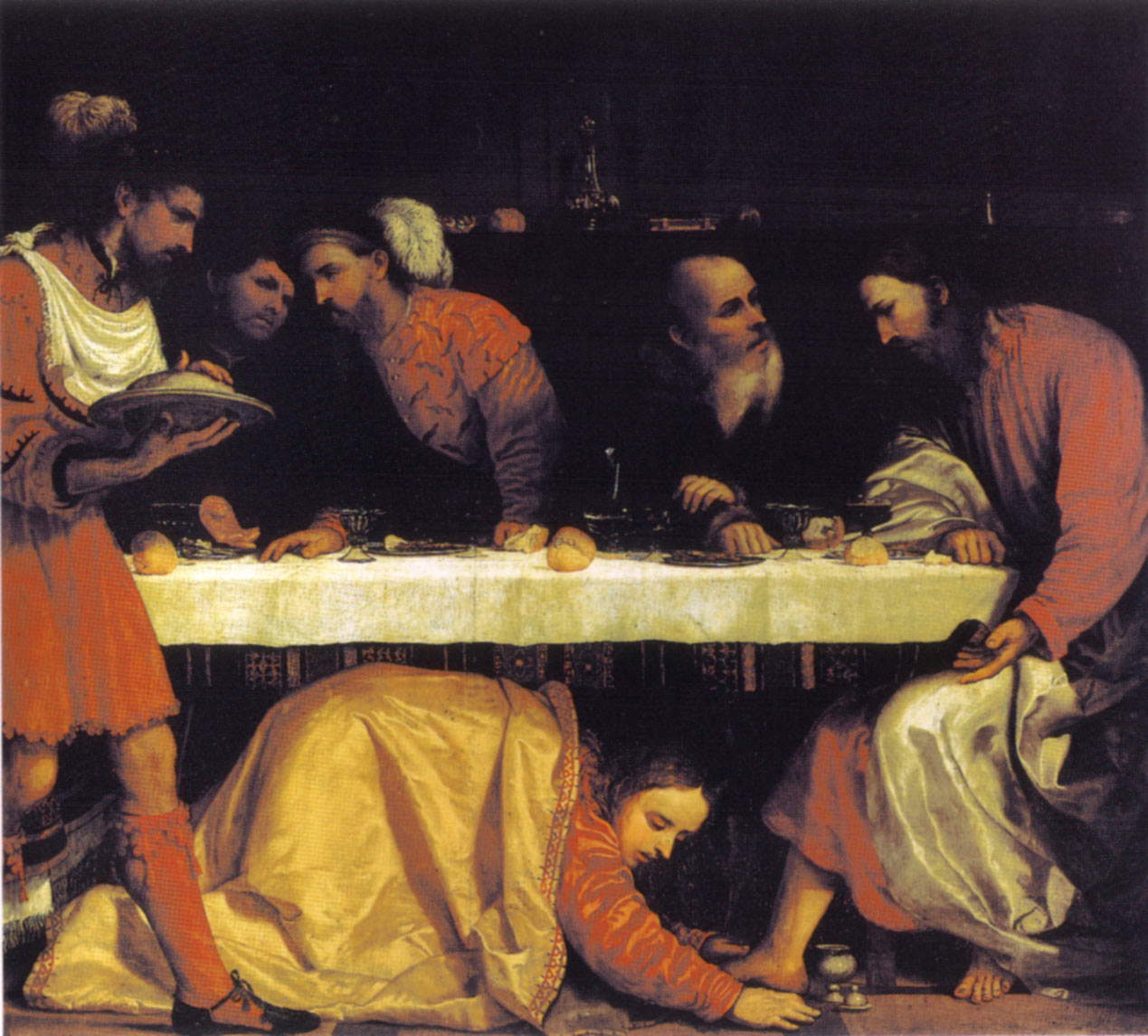 |
| Romanino, Supper in the House of the Pharisee (c. 1545; oil on canvas; Brescia, San Giovanni Evangelista) |
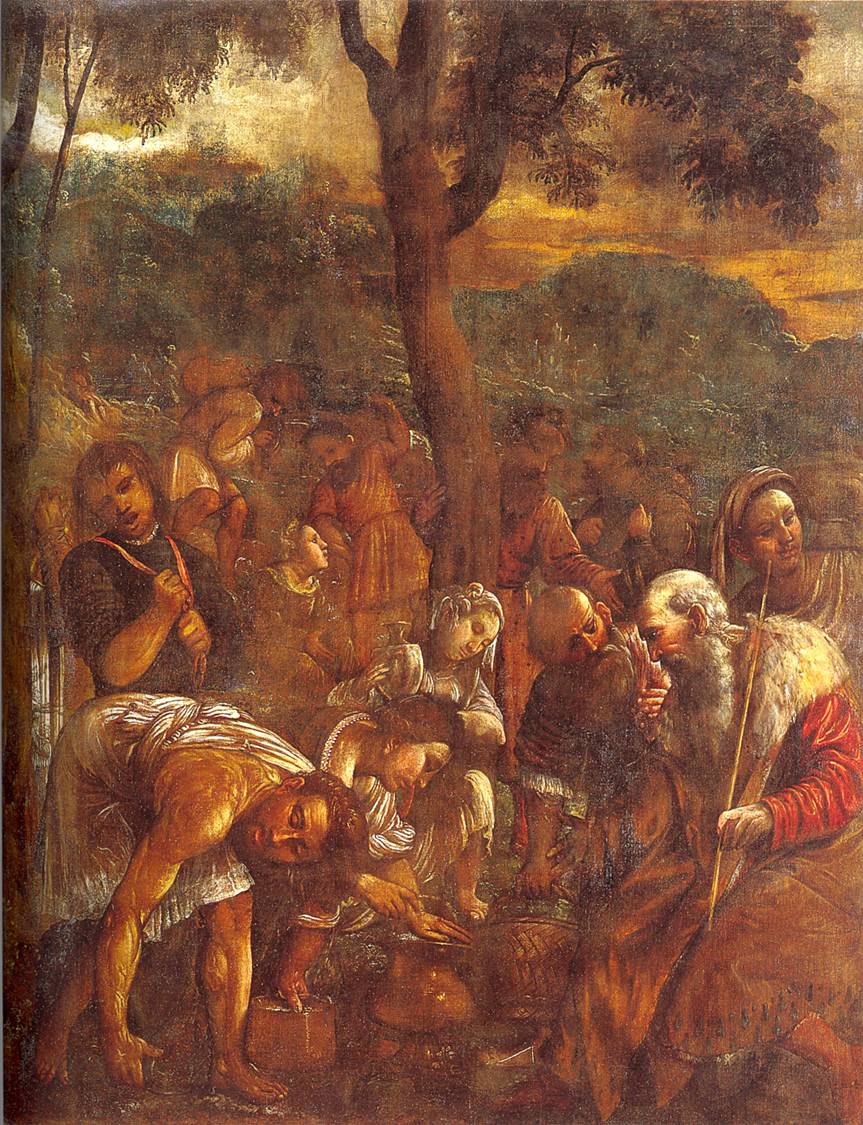 |
| Romanino, The Harvesting of the Manna (c. 1555; mixed media on canvas; Brescia, Duomo Vecchio) |
Why this? Because Romanino did not want to be a classicist or a classicist but he did not want to be a mannerist either, and on this point I think Prof. DellAcqua said in passing, quickly, two words, and that is that classicism was within him outmoded as an integral, total, harmonious vision of the world and mannerism was rejected by him because this integral, total, harmonious vision of the world, mannerism dissolved it, disintegrated it, consciously degenerated it. Mannerism was unbelieving: Pontormo, Rosso Fiorentino painted the crucifixion however evidently in their background they were diabolical, they were unbelievers. Romanino did not, so he could not accept Mannerist criticism of classicism, because he continued to be a believer, and that he was a believer is shown by the fact that his religious painting is all nonconformist. If anything, I would have doubts about Moretto’s faith, which is all so devout, and as Piovene said so well, somehow still classicist, but I have no doubts about Romanino’s faith, though dramatic and though troubled by strange episodes like the one in the pre-seventeenth-century altarpiece I was telling you about earlier. So Romanino was what his culture did not allow him to be, and this is the critical point, this is the center of my paper, which I hope is quickly drawing to a conclusion: Romanino was something outside of his time, in time and in history, he was something that his culture did not give him the possibility to have the consciousness to be, so that stylistic researches are pretextual in two senses: first to avoid classicism and mannerism, which were two cultural moments that he rejected, secondly to escape a self that he did not have the critical cultural tools to be able to express. In short, while in the great painters contemporary with him and perfectly Renaissance and sixteenth-century painters there occurs what Goldmann calls the law of homology, that is, the structures of a social world are projected and reproduced in the stylistic structures of the painters, this is not the case for Romanino.
The whole stylistic world of Titian is profoundly homologous to the Venetian society of his time, that is, to a moment of Renaissance civilization. Even certain minor painters contemporary with Romanino, precisely the other Brescian painters, Moretto, Savoldo, are profoundly homologous to a type of Italian Renaissance society, they reproduce it in their style; Romanino, on the other hand, does not. That is why his paintings are so contradictory and so complex and so unrecognizable. Given his moral position in relation to the culture of his time, given those two basic cultural elements I mentioned in the beginning (i.e., a Central European-Danubian-German type of reformist culture and a tendency of his own, which is bourgeois, which is of the great bourgeoisie and which then produces this reformist revolution of Central Europe, bourgeois tendency to look realistically at the people, the people) these two cultural moments of his, deeply immature in Italy in his time, in his moment, he could not reproduce them directly, they eluded the structures of his society and so subjected him to a perpetual crisis, in an anguish that he hon could solve. He is thus more modern than what the Italian society and culture of his time would allow him to be and he escapes this historical cultural stranglehold in a way that is sometimes disjointed, also prefiguring pictorial types and conventions of future pictorial structures. For example, the famous frescoes of Pisogne, which are extraordinary, or the beautiful ones of Breno with the story of Saint Daniel (one of these episodes is perhaps his masterpiece) reveal in him a possible, I tell you a boutade, do not take literally, a possible illustrator of Don Quixote.
There are certain dice players, who could illustrate a work written a century later, and certain figures of his that are not grotesque, as Guttuso said and as was generally said, are not grotesque at all, but are made of a realism as a man of the sixteenth century could see it, that is, under the species of the so-called comic style: it is a comic realism opposed to the tragic style. This comic realism we cite as grotesque, instead it was the way of being realistic at that time. Certain precisely comic, realistic style (there are moments when, for example, we see Christ in an apron washing Peter’s feet and other such figures) even makes one foresee not impressionisticpaintings, but, I say this again as a boutade, makes one foresee the caricature of a Daumier, and caricature is a typically bourgeois and modern moment, and I think he is the only painter in the whole Renaissance who has this possibility of being a cartoonist, a caricature painter, someone who represents a realistic social moment of his time through the sign of caricature (when this caricature is serious, severe and powerful, you understand, as precisely in Daumier). In Romanino there is never the icy grotesque of the Gothic, and therefore his sibyls are not prefigured by the sibyls of, say, Civerchio or the Brescian painters before him, nor is there the grotesque of the Renaissance, which is purely metaphysical, absurd.
Here in short in conclusion: Romanino struggled all his life on two fronts: one against classicism as an expression of Italian civilization which he had overcome through probably a non-classical type of culture i.e. Central European-Northern Germanic-Danubian Protestant reformist and one against mannerism, which was a critical way of resolving classicism to which he could not adhere because he was a believer, because he was a stern, morally strong man, set strictly, rigorously and therefore could not adhere to mannerism even though the temptations were continuous. And so his extreme life violence continually frayed into a continuous series of contradictions and struggles.
Warning: the translation into English of the original Italian article was created using automatic tools. We undertake to review all articles, but we do not guarantee the total absence of inaccuracies in the translation due to the program. You can find the original by clicking on the ITA button. If you find any mistake,please contact us.